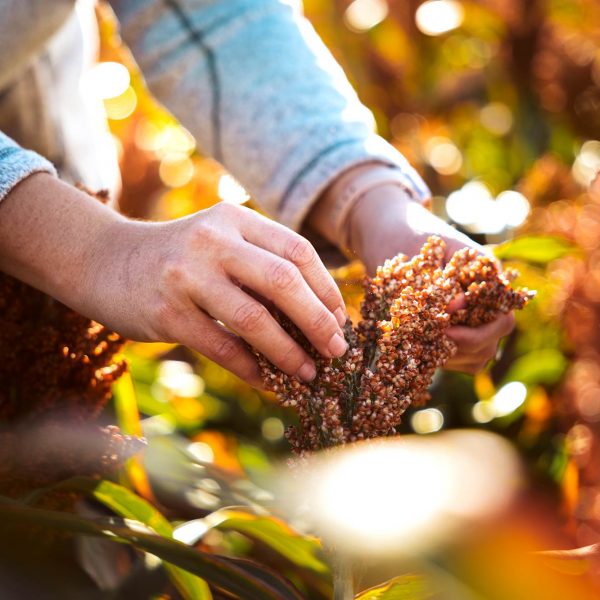Waxy Sorghum: What Is It?
By Sorghum Checkoff Agronomy Director Brent Bean, Ph.D., and Sorghum Checkoff Crop Improvement Director Justin Weinheimer, Ph.D.
A goal of the United Sorghum Checkoff Program’s Board of Directors is to increase the value of grain sorghum by providing end users with desired quality attributes. One attribute which has shown promise is waxy sorghum. So, what is waxy sorghum?
The first image many growers have upon hearing of waxy sorghum is the grain must be covered with a waxy, shiny coat. This is not the case; in fact, waxy sorghum is mostly indistinguishable from other grain sorghum in the field. The actual color of grain is as variable as non-waxy sorghum coming in red, bronze, yellow, tan and white colors. What makes waxy sorghum different is the makeup of starch in the grain. Starch in the endosperm of traditional grain sorghum is made up of two polymers: amylopectin and amylose. In traditional grain sorghum the ratio of the two is approximately 75 percent amylopectin and 25 percent amylose: however, waxy sorghum is made up almost entirely of amylopectin.
So, why is this important? Amylopectin is easier to digest than amylose. Research has suggested that ethanol yield and fermentation efficiency may be improved with the use of waxy sorghum. Additionally, grain sorghum is the preferred source of starch for the baijiu market. Baijiu is the most popular alcoholic drink in the world, most notably in China, and waxy sorghum may have some significant benefits to this market. There are also potential uses for waxy sorghum in the U.S. food industry.
Historically, waxy sorghum hybrids have exhibited some agronomic shortfalls. One of these is that the grain of waxy sorghum may deteriorate in the field under prolonged wet conditions late in the growing season. There has also been some observed yield drag associated with waxy sorghum. With additional genomic knowledge and new breeding techniques, sorghum breeders are confident waxy sorghum hybrids will be developed to compete favorably with non-waxy hybrids and address some of the previous shortfalls.
The Sorghum Checkoff is currently working with seed companies and public seed developers to evaluate new, competitive waxy grain sorghum hybrids while simultaneously increasing testing of this opportunity with end users. The ultimate goal is to increase grain sorghum value for both the producer and consumer.




